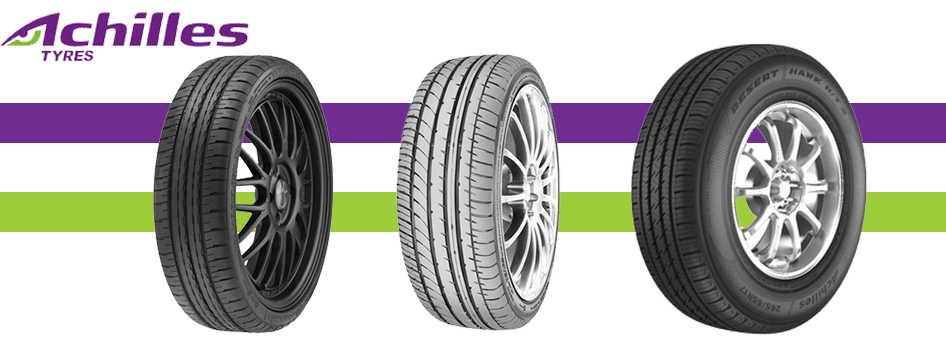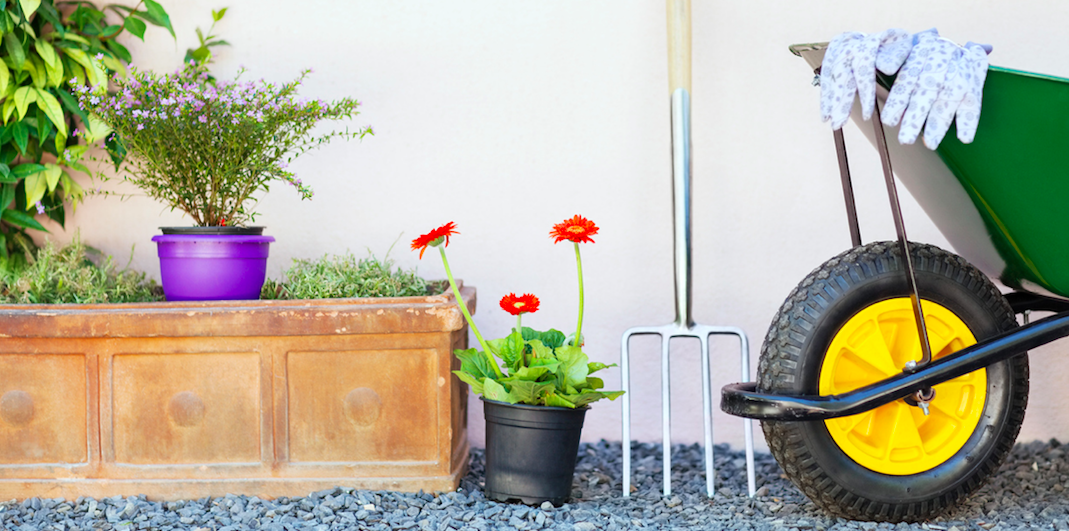Last Updated on April 21, 2024
Choosing the Right One for Your Needs
When looking at the auto industry, perhaps no area is more extensive than tires. Regardless of what you drive, what climate you go in, what job you need to do, or anything that requires you to operate a vehicle, there are all sorts of tire options and levels of investment based on your requirements.
As you can imagine, purchasing the right tire is not always a black-and-white decision. You need to start by understanding your stipulations, what type of driving experience you want, and your price points.
Types of Tires – Finding the Best Fit for Your Needs
Generally, there are eight major vehicle tire types, each serving vastly different functions. But which is suitable for you and why? Let’s dive in.
1. All-Season Tires
The all-season tire was dubbed initially in 1977 when Goodyear introduced the Tiempo. The idea behind this concept was to create a solution to alleviate the hassle of switching out tires twice a year in the winter and summer months.
All-season tires have unique tread compounds and rubber to stay flexible in hot and cold weather. The tread on these tires is engineered to stabilize the vehicle on snowy roads and push out water for traction and handling in many weather conditions.
You might notice that many all-season tire models come with an M+S marking. Based on standardized tire industry testing, the symbol stands for Mud + Snow. Initially, this symbol was meant to differentiate knobby bias-ply tires from more common rib treads, mainly used on light truck and radial car tires. As time passed, it became the standard marking to indicate that a tire has all-season capability.
The name “all-season” implies that these tires can be used year-round. While this is true to an extent, it depends on where you live. All-season tires typically work best in climates where the temperature stays above 45°F.
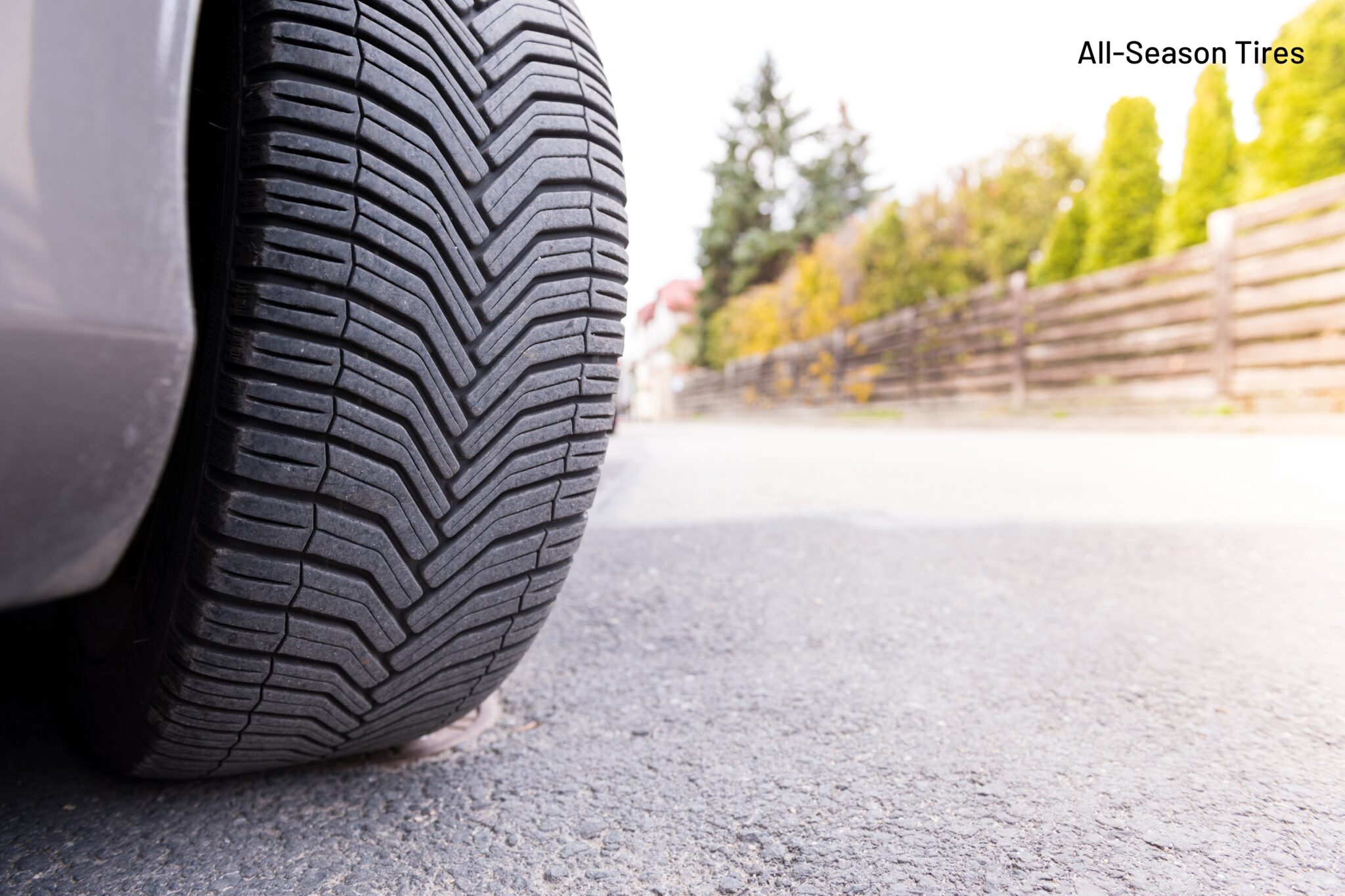
What Are the Benefits?
- More extended Tread Wear: All-season tires are engineered to provide a longer tread life than more specialized tires. For example, many drivers will see all-season tires last anywhere from two to three times longer than summer tires.
- Low Costs: When you get into specialized tires for specific seasons or applications, you pay an excellent deal for cutting-edge technology and designs. While all-season tires can undoubtedly have similar innovative features, they are geared towards general purpose and typically have lower price points.
- Longer Warranty: All-season tires are built to have exceptional tread wear. In turn, many all-season models come with more extended warranties than specialized tires.
- Smooth and Quiet Ride: Most specialized tire models are primarily built for traction in extreme conditions, certain terrains, or specific applications. Comfort on moderate roads is the primary criterion for designing most all-season tires.
What Are the Drawbacks?
- Not Ideal for Extreme Winter Conditions: In relatively cold weather with Snow, rain, or ice, all-season tires will provide adequate handling. In light Snow, all-season tires should be fine. However, getting specialized snow tires is highly recommended in heavy Snow and ice, especially in climates routinely exposed to extreme winter conditions.
- Not Ideal for Extreme Summer Conditions: All-season tires will only provide moderate traction if you live in a climate that experiences extreme heat. They don’t have the same soft, flexible tread compound that summer tires do to deliver excellent handling on hot and rainy days.
So, when looking at all-season tires, the strengths are also the weaknesses. In short, all-season tires work to be the “jack-of-all-trades.” However, as the saying goes: “a jack-of-all-trades is a master of none.” That being said, the drawbacks of all-season tires depend on where you are driving. If you periodically experience extreme weather conditions, all-season tires might not be ideal in those times of the year.
Innovation in All-Season Tires
StabilEdge Technology – This innovation enhances handling ability and dry-tracking stability. It involves small bumpers placed within the tread blocks to keep the tread flat and open for maximum traction and precise agility.
The Cooper CS5 Grand Touring is a popular all-season model that uses this technology to improve traction during hard cornering, acceleration, and braking. The high-grade silica rubber offers more extended tread wear effective in wet or dry conditions.
Dynamic Range Technology – Tires with Dynamic Range Technology use a silica tread compound and asymmetric design to provide optimal grip on dry, wet, icy, and snowy road conditions. More specifically, this technology was created to have a more robust tolerance for extreme temperatures and deliver extra-long mileage durability for passenger vehicles.
The Falken Sincera SN250 A/S is a smart all-season option that uses Dynamic Range Technology for a smooth and stable ride on all sorts of roads and conditions. This versatile tire is designed to remain flexible and grippy in extreme temperatures.
2. Highway Tires
Highway tires are meant to be used primarily on paved roads. They are strictly intended for commuting, typically come with extended mileage warranties, and are designed for smooth, quiet rides with predictable handling on cars, trucks, and SUVs. Most highway models feature independent tread blocks and multiple sipes around the tire for optimal on-road performance with traction in moderate weather conditions. Most come with the M + S symbol and can provide all-season versatility.
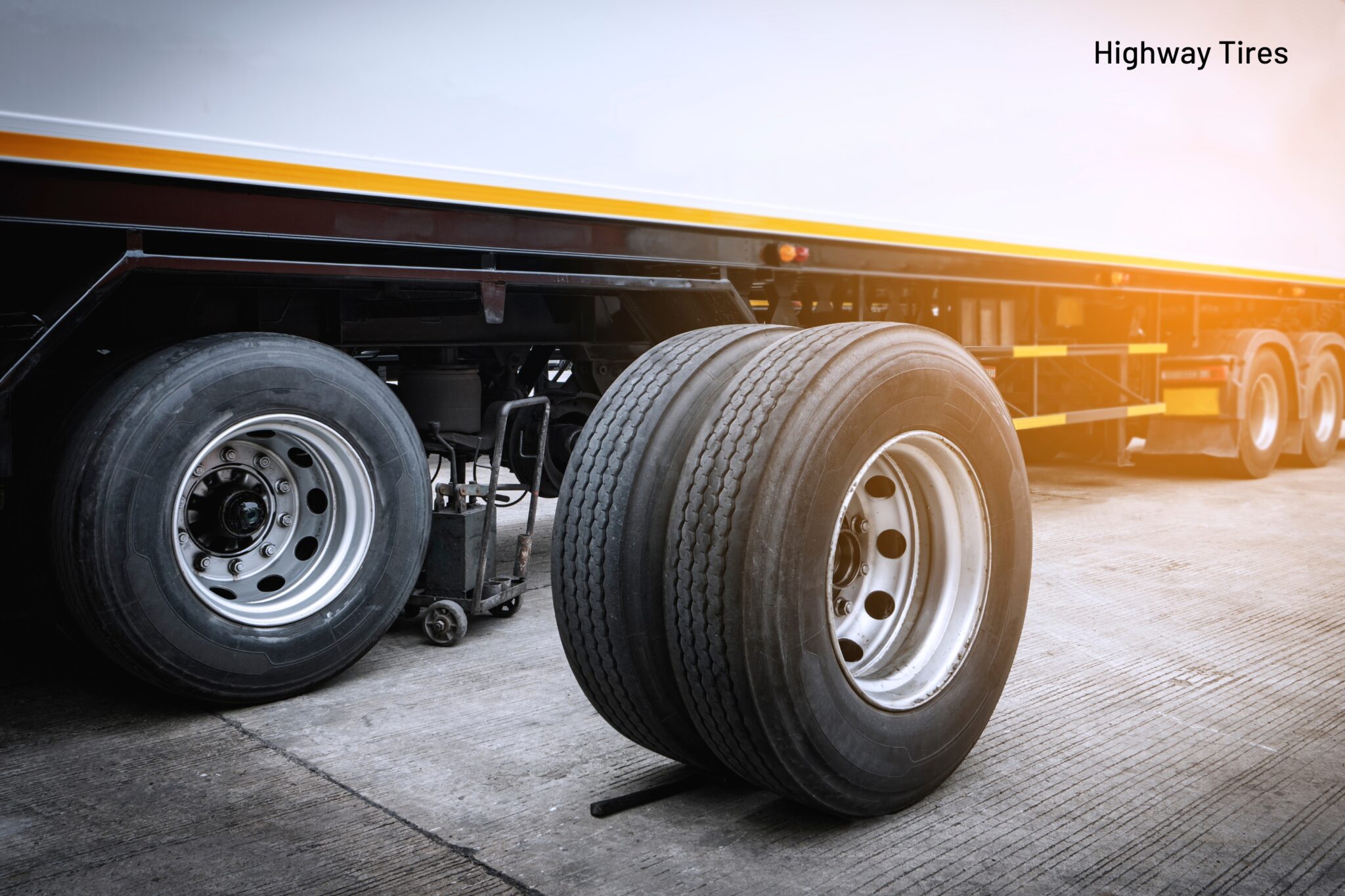
What Are the Benefits?
- More extended Tread Wear: Highway tires are typically designed with unique tread patterns that minimize noise and dissipate heat, reducing tread wear for longer tire life.
- Enhanced Traction on Wet Roads: Most models have minor siping grooves (often in a wavy or zig-zag pattern) that channel water away quickly and improve traction on wet roads.
- Good Fuel Economy: As the name implies, highway tires are designed for long commutes and performance on paved roads at high speeds. One of the primary characteristics of these models is to provide a smooth and quiet ride while maximizing fuel economy. This is especially advantageous for trucks and SUVs that typically get less mpg.
- Better Braking and Cornering: The less aggressive tread designs on highway tires deliver excellent braking and cornering compared to other tire types.
What are the Drawbacks?
- Disadvantage On Wintery Conditions: While many highway models can handle wet roads and light Snow, they are not designed with tread patterns to handle heavy Snow and ice.
- Poor Performance Off-Road: Due to the less aggressive tread patterns (solely for paved roads), highway tires may not provide optimal traction on dirt, gravel, sand, and Mud.
Innovation in Highway Tires
3D Micro Gauge – Patented by Cooper, this siping technology maintains traction on wet roads, improves stability, and enhances grip with a silica compound displacing heat. Additionally, the silica compound works to shorten braking distance for excellent fuel economy,
The Cooper Evolution Tour employs 3D Micro Gauge technology to extend the depth of the tire’s tread and encourage even wear throughout its lifespan. This line also uses a 5-rib tread pattern and wide lateral shoulder grooves to prevent hydroplaning.
3. All-Terrain Tires
All-terrain tires are designed to have high traction on all kinds of roads and surfaces. Models that fall under this type of tire have a combination of open treads designed for off-roading and handling on paved streets. The most important thing to remember with all-terrain tires is that they are meant for multiple purposes. So, if you only drive on paved roads and highways, this is not a good option.
All-terrain tires are ideal for:
- Light trucks
- Pickup trucks
- SUVs
- 4-wheeler drive vehicles.
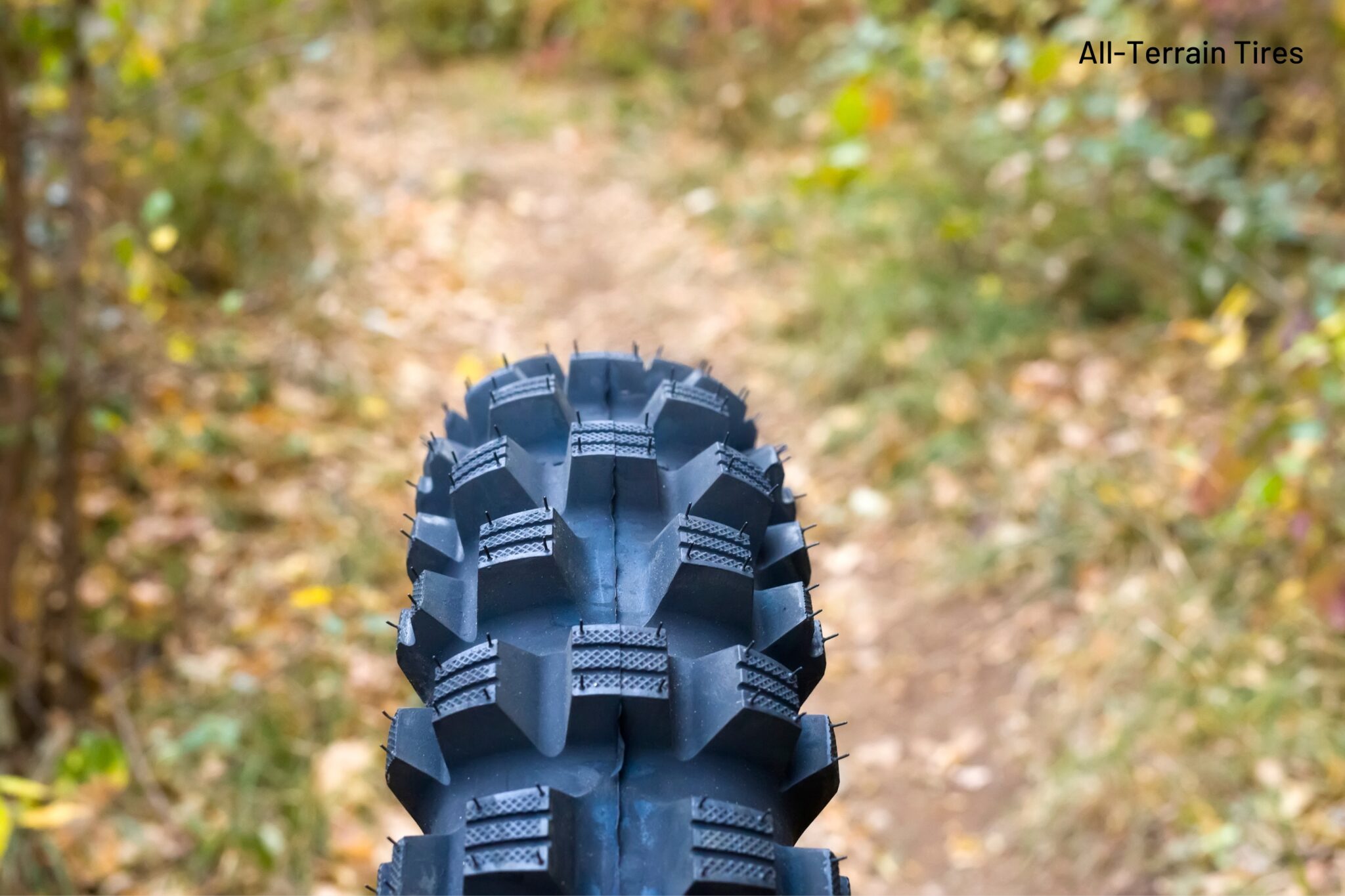
What Are the Benefits?
- Year-Round Operability: As this type of tire is designed to handle harsh conditions on pavement and off, these models provide excellent traction in Snow and ice and on hot and rainy roads. However, it’s important to note that winter and summer tires will still be advantageous in the respective conditions.
- Reinforced Walls: You’ll find reinforced sidewalls on many all-terrain tire models. The primary purpose is to increase the load-carrying capacity on various road conditions. These models are great for heavier vehicles that see more off-road use.
- Open-Tread Design: Open tread patterns make all-terrain tires effective on off-road surfaces. The versatile interlocking tread elements provide excellent grip on rocks, Mud, and paved roads.
What Are the Drawbacks?
- Loud Noise: Due to the tread design meant to maximize traction, all-terrain tires will make a much more audible noise than tires designed for paved roads. All-terrain tires typically have symmetrical grooves that make the air passing through them give off a louder noise, especially on highways and touring streets.
- Shorter Tread Life: All-terrain tires are softer rubber that can be manipulated to perform adequately on diverse surfaces. Unfortunately, the side effect is that the tread wears out quicker than other tire types.
- Poor Fuel Economy: When comparing all-terrain vs. highway tires, highway tires take the cake. All-terrain tires are designed for maximum traction, which, in turn, decreases the fuel efficiency. However, as these tires are meant for both on and off-road driving, most models get better mileage than those strictly for off-roading.
Innovation in All-Terrain Tires
Pitch Sequencing – Pitch sequencing is used to randomize a tire’s road contact to reduce noise. Tire designers will sequence multi-pitch tread designs to vary in tread block size and shape subtly. The circumferential block placement of the ribs is meant to align lateral grooves with adjacent tread blocks to change the audible tones until the tires produce more of a pleasant white noise.
The Mastercraft Courser A/T2 tires are an incredibly versatile all-terrain option with a 5-rib design for optimal performance. These models offer a refined tread element shape and pitch sequencing to improve performance while minimizing the noise.
Adaptive Traction Technology – Patented by Cooper, Adaptive Traction Technology is meant to improve the versatility of all-terrain tires and seamlessly “adapt” to rocky and smooth surfaces in hot and cold weather.
The Cooper Discoverer AT3 Line uses high-level Adaptive Traction Technology for SUVs and light trucks. Cooper prides itself in the AT3 line, perfect for everyday commutes and weekend adventures. The silica-based all-weather compound and all-terrain tread design give these tires a leg up in various temperatures and environments.
4. Sport Tires
Sport tires are used on high-performance, light trucks designed for excellent handling, performance, and looks. Thanks to a larger contact patch area, sport tires provide excellent grip on dry paved roads. These tires are typically used with more giant rims and come with relatively low aspect ratios (profiles), which are 55% or less. Sports tires are commonly associated with 225/55 (55 being the aspect ratio). This number shows the relation of the tire height to width in a percentage. For example, on a 225/75, the tire size would be 75% of 225 mm = 169 mm.
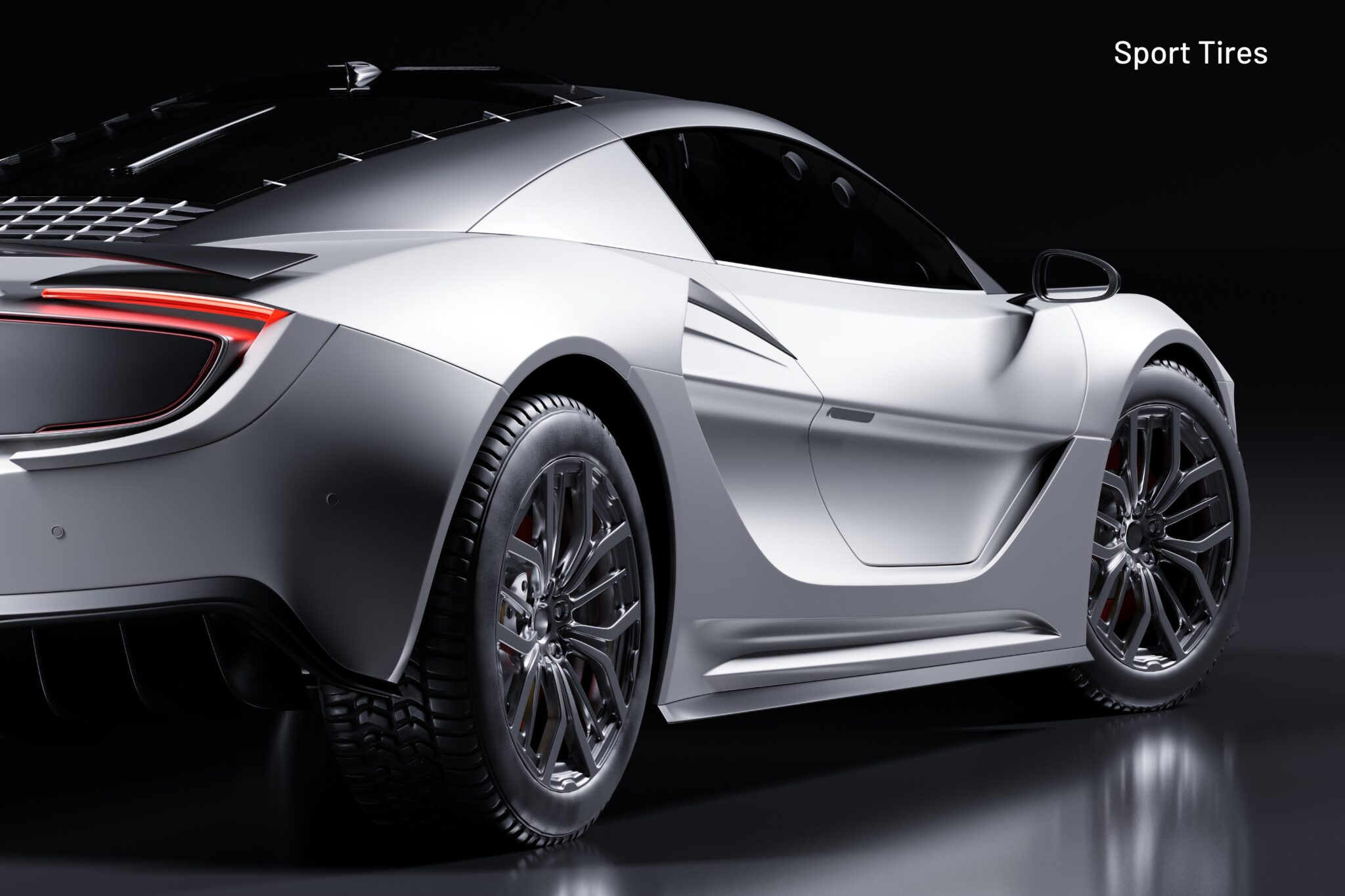
What Are the Benefits?
- Good Fuel Efficiency: These tires are designed for paved roads, so most models are created with fuel economy in mind.
- Improved Performance: The criteria for sport tires is that they give the vehicle a competitive edge in areas like cornering, braking, handling, etc. The wider contact patch area and stiffer sidewalls provide better lateral and cornering forces designed for high speeds.
- Fabulous Looks: A tire meant to go on flashy sports cars must have a look that fits the part. Sport tires are created with appealing patterns to compliment the vehicle they are used on.
What Are the Drawbacks?
- Prone to Damage: Sport tires are not meant to be used on rough roads. Hitting a pothole can result in the rim cutting through the sidewall or causing wheel damage.
- Fast Wear: These tires are designed with softer compounds for better grip and traction, making them more susceptible to wear.
- Rough Ride: Due to the short and stiff sidewalls, sport tires have less shock absorption – which can make the vehicle ride bumpy, especially on more damaged or unsmooth roads.
Innovation in Sport Tires
Active Traction Siping – Patented by Dunlop, this system uses three unique types of sipes designed to pull, grip, and improve traction for superior cornering, handling, and braking.
The Achilles ATR-K Economist is a sporty high-performance tire that boasts Active Traction Siping and a potent combination of style, performance, and comfort at an affordable price point. The deep grooves, multiple edges, and additional sipes give this tire excellent traction and grip all year round – making it one of the most versatile sports tires on the road.
Self-Supporting Technology – Another breakthrough from Dunlop, this technology uses a unique sidewall construction that allows continued driving on a flat tire for up to 50 miles at up to 50mph in normal driving conditions.
The Dunlop SP Sport 5000 is a trendy model that features the brand’s self-supporting technology for coupes, sporty sedans, and crossovers. This model is designed for high performance with all-season versatility on wet, dry, and mild wintery roads.
5. Mud Tires
While all-terrain tires are meant to provide a good driving experience in both on and off-road situations, mud tires, as you can imagine, are designed explicitly as off-road tires. Mud tires can get the job done on everything from Mud to rocky gravel to uneven dunes.
If you look at the comparison above, you’ll see that mud tires have larger tread blocks and gaps (void areas) than all-terrain tires. These are designed to clear Mud and debris and grip and release terrain more efficiently to create as much rubber-to-ground contact as possible for better traction.
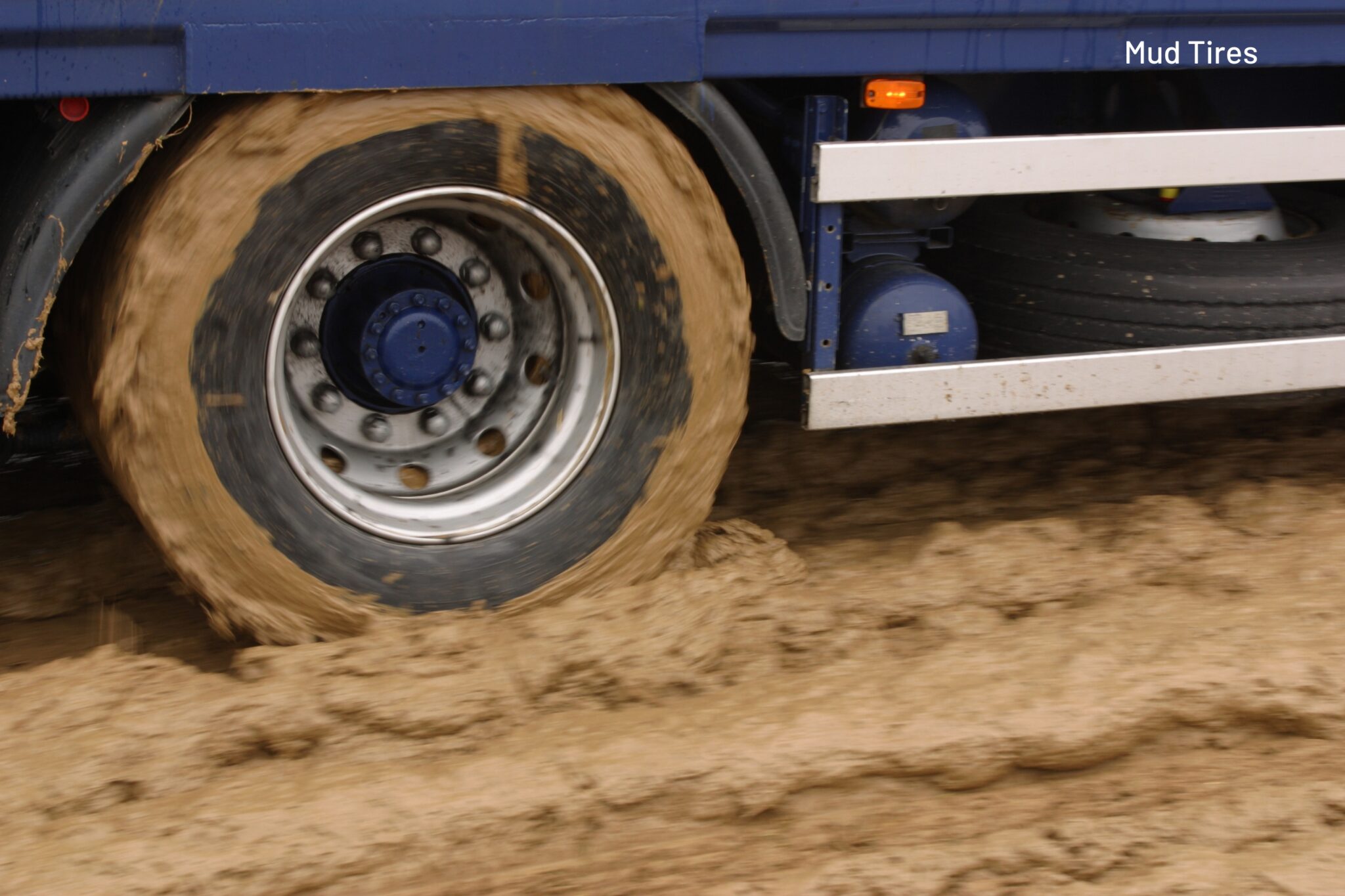
What Are the Benefits?
- Extra Traction in Tough Conditions: Mud tires have deep ridges that help maintain traction on treacherous roads.
- Cut, Chip, and Puncture Resistance: By default, mud tires’ surface layer tread compound must be durable. Mud tires are designed to take punishment in off-road conditions and are highly resistant to cuts, chips, and punctures.
- Multiple Ply Layer: Most mud tires are made with 3-ply sidewalls. In addition to added durability, the strong sidewall allows the tire to run on a low PSI to improve performance in off-road conditions.
What Are the Drawbacks?
- Loud Noise on Roads: Given the tread patterns and deeper void areas, the time spent driving on paved roads with mud tires will be very loud.
- Reduced Handling on Paved Roads: While the handling will be good on off-road paths (as intended), mud tires will not have the same effect on paved roads.
Innovation in Mud Tires
3D Canyon Sipe Technology – Characterized by deep tread grooves, 3D Canyon Sipe Technology seamlessly ejects Mud, stones, or debris to ensure a vehicle can scale steep inclines and terrain.
The Falken Wildpeak A/T3W uses this technology and an array of versatile features. This tire model has earned the respect of truck, SUV, and Jeep owners everywhere. The sidewall pattern of this model provides an extremely high level of off-road traction and stability all year round.
6. High Performance and Ultra-High-Performance Tires
The performance tires we know today were introduced to America in the early 1980s when Goodyear fitted several high-performance cars – namely the Corvette.
Sports, performance, or summer tires are designed to give drivers superior handling and traction on paved roads in wet and dry conditions. These tires are essential for those looking for an exhilarating driving experience and to operate their high-performance vehicle to the highest total capacity. Performance tires typically feature stiff, low-profile sidewalls, large tread blocks, and nylon caps over the steel belts to keep the tire together while moving at high speeds.
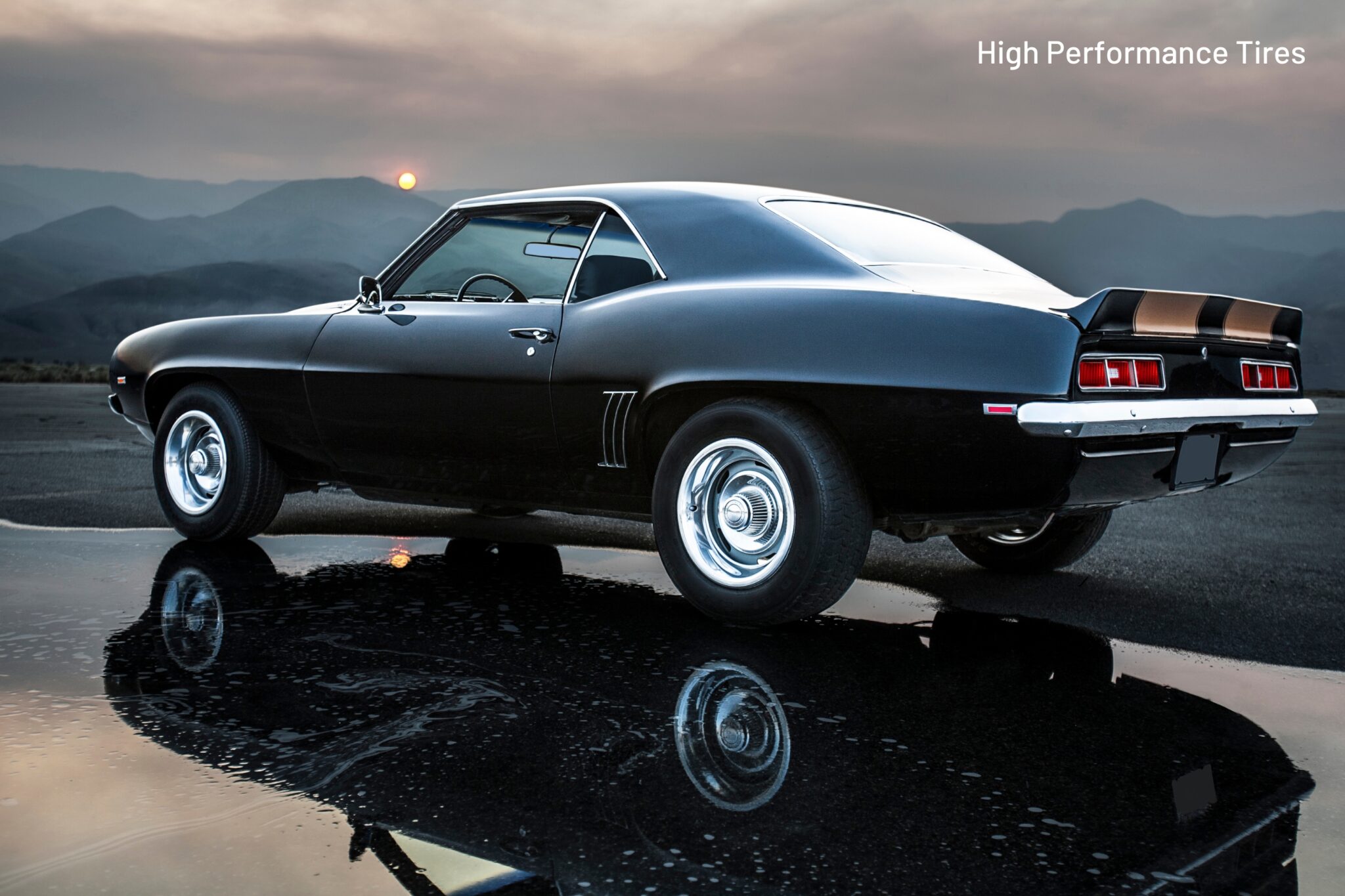
What Are the Benefits?
- Better Handling: Performance tires give drivers stiff steering response and tight handling. The increased grip of these tires significantly improves cornering, and most tread patterns are specifically designed for optimal control at high speeds on dry surface conditions.
- High-Speed Rating: These tires were initially built for racing to handle much higher speeds than regular passenger tires.
- Work Well with ABS: As they are meant for superior handling, performance tires are designed to react well with modern anti-lock braking systems and sensitive steering and suspension.
What Are the Drawbacks?
- Not Ideal for Hazardous Driving Conditions: Most high-performance models are primarily designed for dry road conditions and are not ideal for icy or snowy roads.
- Can Lose Grip When Pushed Beyond the Limits: When buying and using performance tires, drivers must be aware of the speed rating and careful not to exceed it after an hour. If pushed too fast for too long, the tire can begin to lose traction, potentially resulting in a fatal accident.
Innovation in Performance Tires
Ultra High Performance, All-Season Capability – A common stigma surrounding performance tires is they only work well in dry conditions. While the goal of many tire companies has been to change this perception, Bridgestone recently unveiled a design that goes the extra mile (pun intended). Following Bridgestone’s lead, many tire brands are pushing to make their high-performance tires have all-season capability.
Bridgestone’s Potenza RE980AS is a performance model with a unique tread design that allows the tire to quickly expel water and grip snowy roads while significantly reducing the risk of hydroplaning. Additionally, the tread is asymmetric and employs 3D, full-depth siping to increase the rubber’s flexibility in colder temperatures.
7. Snow/Winter Tires
As the name implies, snow/winter tires are specifically designed to handle cold weather conditions ranging from heavy snowfall to black ice. These tires can be characterized by flexible tread rubber that remains soft in lower temperatures, which creates a better grip on slippery roads. The tread depth and unique patterns on winter tires are designed to help push out Snow and water for better traction.
Another critical characteristic of snow/winter tires is biting edges for extra traction on icy roads. For the best results, snow/winter tires should ONLY be used in areas where temperatures regularly dip below freezing.
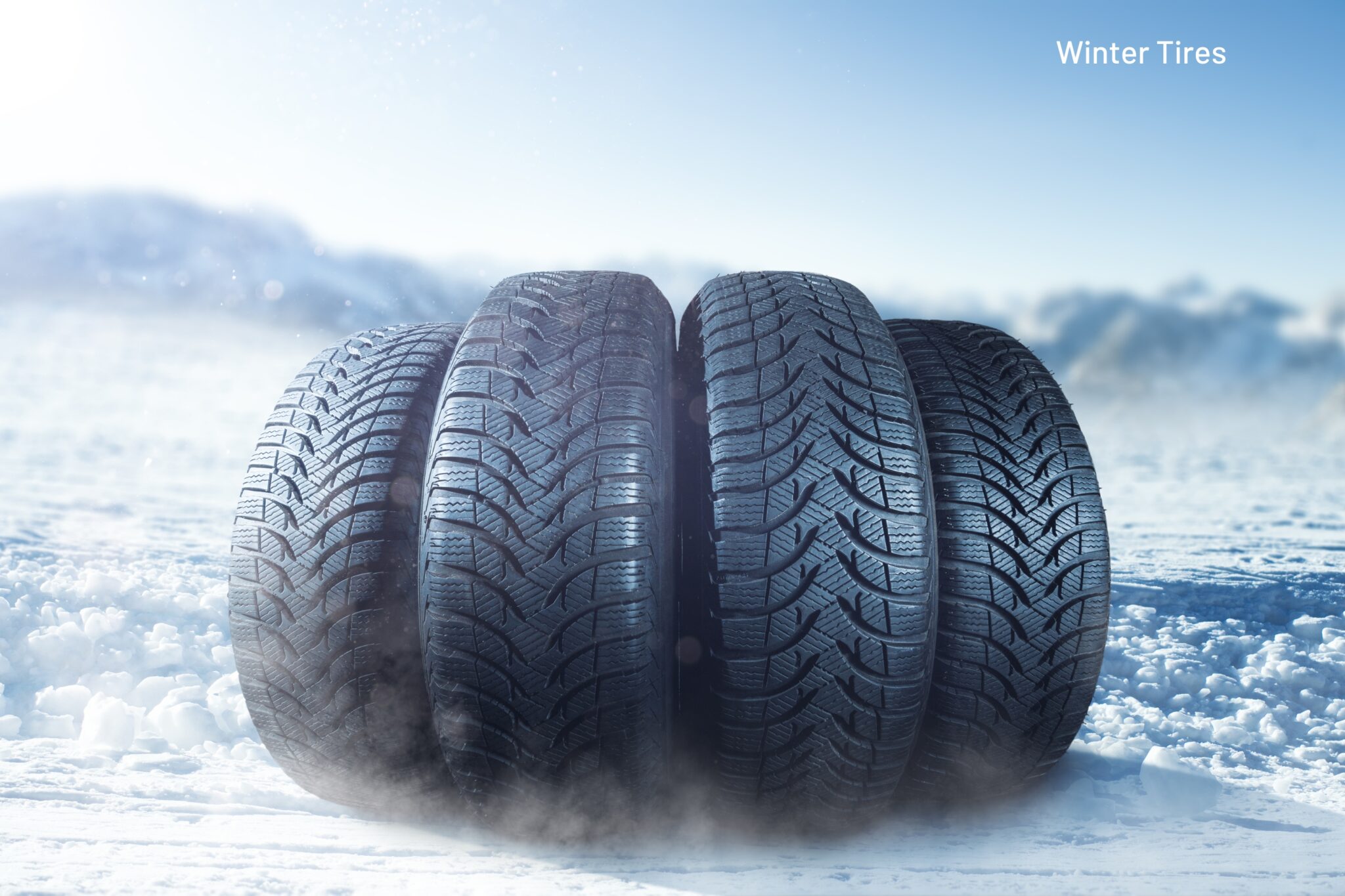
What Are the Benefits?
- Improved Grip: When driving in heavy Snow or ice, the core purpose of snow/winter tires is to give you a better grip. These tires are designed with soft rubber and have deep treads for the best possible traction. Some models come with studs for enhanced grip in extreme weather conditions.
- Better Braking: On slick winter roads, braking is everything. Unlike all-season tires, which can easily lock up and skid on slippery surfaces, the tread on snow/winter tires digs into Snow and ice to ensure you can stop quickly if needed.
What Are the Drawbacks?
- Winter Tires with Studs Can Damage the Roads: Inferior Handling: Due to the design, snow/winter tires offer less precise handling on dry or mild wintery roads than their all-season counterparts.
- Fragile: As snow/winter tires are built with softer rubber than regular tires, they tend to wear down faster. That said, driving with snow tires in conditions that don’t warrant them can quickly deplete the treads and grip.
Innovation in Snow/Winter Tires
Snow Groove Technology – This technology uses a high silica tread compound and patterns designed to provide the best possible grip on Snow, black ice, and other harsh winter conditions. Snow Groove Technology gives tires firm, biting edges to enhance traction and winter performance.
The Cooper Discoverer M+S is a high-grade, studded winter/snow tire that uses Snow Groove Technology in the design. In addition, the saw-tooth center rib and block tread provide excellent extra stability and even wear.
Snow Trapping Technology – The tread that includes this technology is designed to lock Snow in place upon the initial contact. The purpose is to improve grip through snow-on-snow traction.
The Cooper Discoverer True North line employs Snow Trapping Technology for passenger vehicles facing extreme winter conditions. These tire models are compounded with noise-dampening structures to ensure a quiet ride, no matter what.
8. Truck/SUV Tires
Truck/SUV tires come in all shapes and sizes. As the name implies, these tires are meant to fit passenger trucks and SUVs to handle various tasks. A light truck tire might be the best choice for those who need to pull heavy loads or a trailer. For off-road enthusiasts, all-terrain or mud truck/SUV tires would be ideal. Nearly every type of seasonal and terrain tire can work on a truck or SUV, depending on the need and intended use.
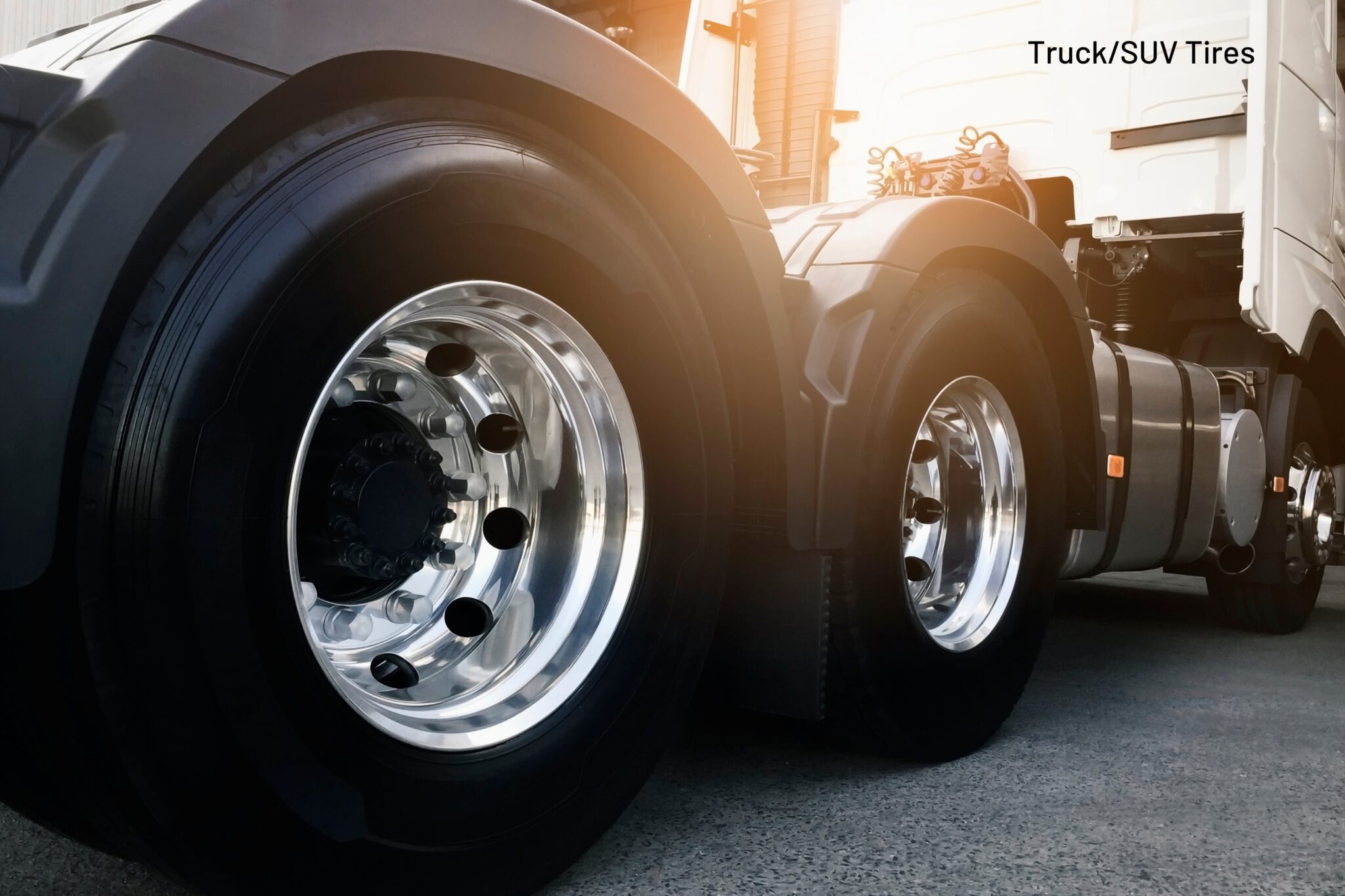
What Are the Benefits?
- More Ground Clearance: Many drivers will choose larger truck/SUV tires for added clearance on rocky terrain for off-roading. Larger tires protect against obstacles that can damage the engine or chassis components.
- Better Traction: Since truck/SUV tires have more mass than those of smaller vehicles, they make more contact with the road.
- Improved Wet Performance: Regardless of what type of truck/SUV tire you have, a HUGE benefit is that these tires perform very well on wet roads and do a lot to prevent hydroplaning. they are significantly more comprehensive models. Truck/SUV tires generally have larger tread blocks and water channels to improve contact.
What Are the Drawbacks?
- Added Strain on Brakes: When you are driving with an upsized tire, it takes more power to come to a stop. Even with moderately sized truck/SUV tires, brake pads wear quickly.
- Upsized Tires Increase Fuel Consumption: Upsized all-terrain and mud truck/SUV tires carry much more weight than regular truck tires. If you’ve upsized your truck/SUV tires, the result is that the engine has to work harder and burn more fuel.
Innovation in SUV Tires
Advanced Reactive Contour Technology enables the tire’s contour to react appropriately to road conditions. The purpose is to help improve tread wear and contact throughout the tire’s lifetime.
The General Grabber A/T X is among the best high-performance truck tires. The General Grabber A/T X is an all-terrain tire line built for traction and exceptional durability in extreme conditions. It uses Duragen Technology technology for increased cut and chip resistance for enhanced tire flexibility and durability.
Conclusion
Choosing tires is not always easy. The most important thing is that you have (at the very least) a basic understanding of your driving needs and why certain tires are better than others. Having a knowledge of which tires work well in certain situations can not only improve your vehicle’s performance, it can save you money and frustration in the long run.
A good rule to live by is that you should always invest heavily and wisely in the things between you and the ground.
FAQs
What tires are best to get?
It depends on your needs, but all-season tires are versatile for most drivers.
Which type of tire is safer?
Winter tires are safest in icy and snowy conditions.
What are the three different qualities of tires?
Traction, durability, and comfort are vital qualities.
What type of tire lasts longer?
All-season tires typically last longer than specialized types.








